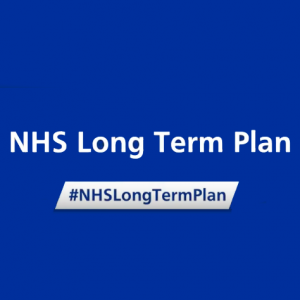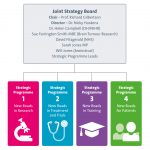 NHS England has just published its Long Term Plan for the next ten years.
NHS England has just published its Long Term Plan for the next ten years.
This sets out how the NHS will be fit for the future. It details the improvements to make over the next decade – whether giving every child the best start in life, improving care for major conditions or helping people to age well – and how these will be achieved, addressing the challenges that the NHS faces now.
The plan has been drawn up by frontline health and care staff, patient groups and other experts, through the 200 events that have taken place, and the 2,500 submissions received from individuals and groups representing the opinions and interests of 3.5 million people.
The full document, along with other resources, can be read at www.longtermplan.nhs.uk.
brainstrust’s response
We were excited about contributing to the Long Term Plan. Here was an opportunity to focus on what we knows matters to the brain tumour community. We consulted with you, with clinicians, with key groups such as the NCRI supportive and palliative care brain tumour subgroup.
What did we ask for?
We had to identify three top priorities; we had four:
- Prompt diagnosis through faster access to diagnostic tests
- For shared decision making to be embedded so that patients and carers are truly co pilots in their care
- Enhanced support for early and phase 3 clinical trials
- Reduction of waste, duplication and inefficiencies in healthcare delivery so that resources can be focused on integrative cancer care.
We also said that more could be done to ensure that:
- More cancers are prevented
- More cancers are diagnosed earlier
- People can maintain a good quality of life during and after treatment.
- People have a good experience of care.
We suggested things like:
- An acceptance that GPs can refer for diagnosis
- More and improved resources of rehabilitation
- Quality coordinated advice and care
- A better understanding of what is important to patients and their families
- Access to a clinical nurse specialist and allied health professionals such as physiotherapists.
Finally, we shared ideas on how to recruit, train and retain a workforce that could deliver the changes needed and how to address the variation and inequality in access to services, treatment and care.
So we are delighted that, in some respects, your voice has been heard. People will be given more control over their health and the care they receive. With the historic divide between primary and secondary care disappearing, care systems will become integrated so that people will be able to access services closer to homes. Prompt diagnosis is on the agenda too with diagnostic centres being established.
What does this mean for our community?
As ever, if care is to be personalised and responsive as set out in the Long Term Plan, people living with a brain tumour need to be informed and engaged in their care.
Helen Bulbeck, co founder and director of policy and services at brainstrust says, “Being diagnosed with a brain tumour is frightening and at the point of diagnosis people don’t know what it is they want and need to know, what they should ask for and to whom they can turn to for help. So we will always be here to support patients and their caregivers to reduce the fear and isolation, so that they can build resilience and focus on what is important to them and what they need – no matter where they are on the pathway or where they live. Our job will never be done, no matter how great our wonderful NHS is.”
We will be keeping close to developments as the plan is put into action, and of course it is important to remember that with devolved health services in Wales and Scotland we need to make sure that care across borders does not create inequality for people living with a brain tumour.





